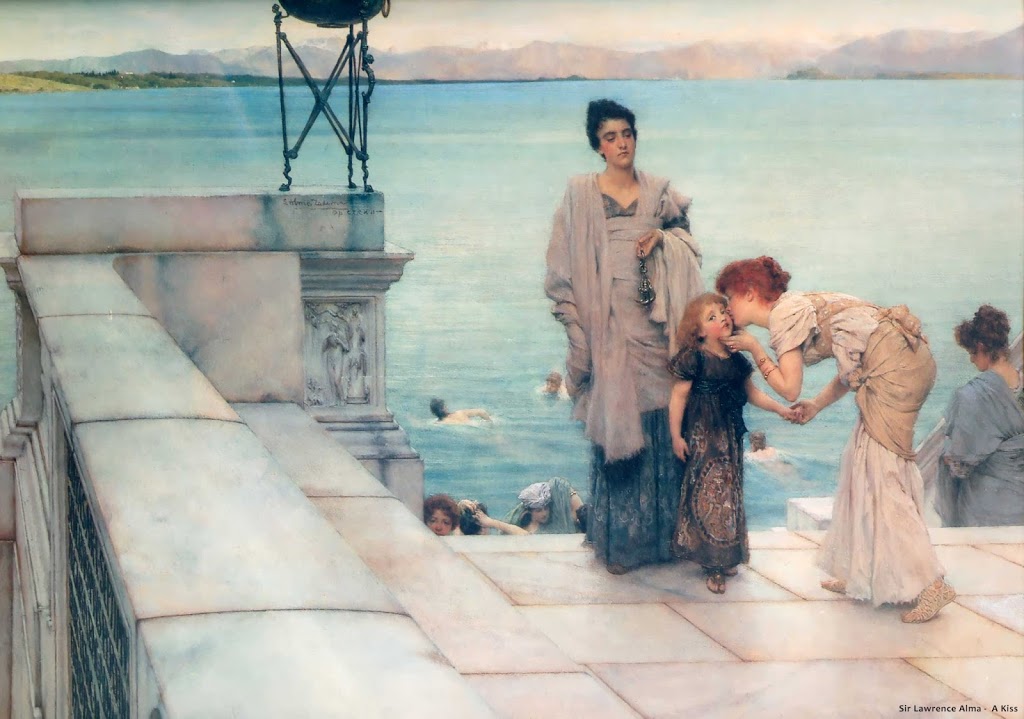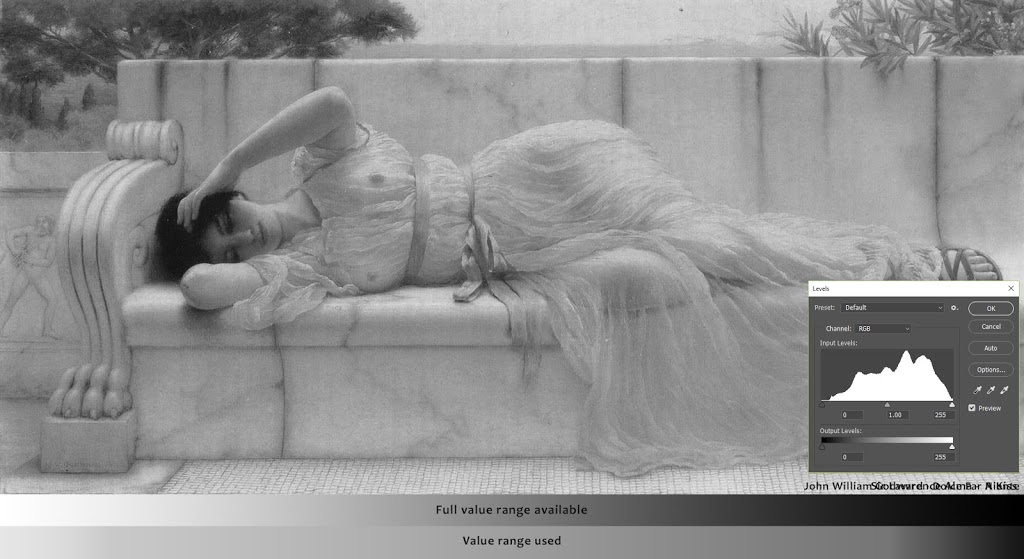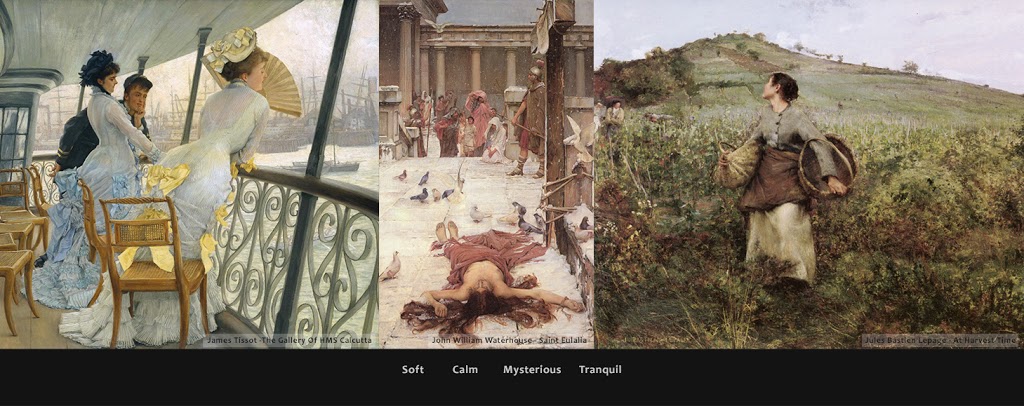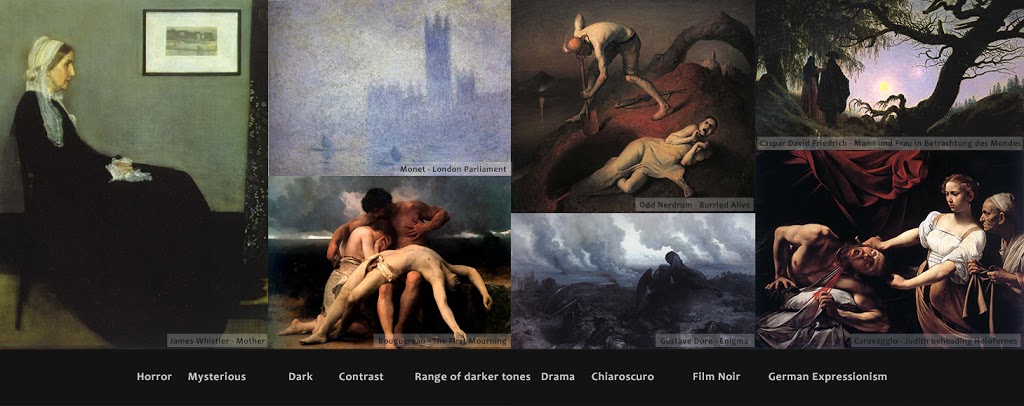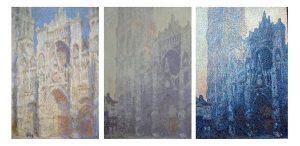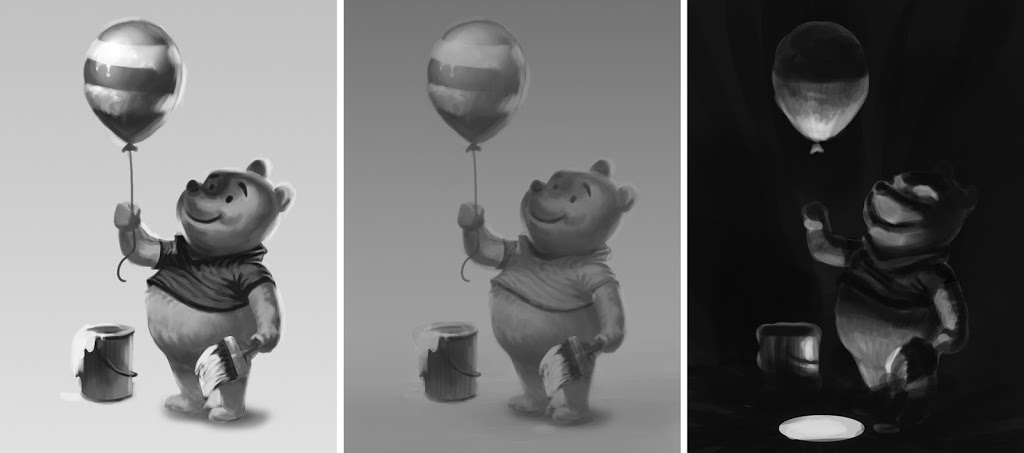The importance of values
We can define a colour by using following parameters; Hue (blue, green, yellow,…), Value (light to dark) and Saturation/Chroma -to keep things simple- (the intensity of the colour).
When just starting out in digital painting, you may be in doubt if its better to start in values (greyscale) or colour first. Here’s why you want to start with values first:
- Value changes = form changes. We see the world around us by use of light and shadow. If something gets darker it means it’s turning away from the light.
- Next to saturation, values are used to create focal points in paintings and illustrations. The human eye is naturally drawn to areas with contrast, i.e. light on dark or dark on light.
- By using gradations of values you can create a sense of depth. An important part of Atmospheric Perspective.
Value structures
Often times artists will chose to work in a certain range from light to dark (value range) to keep the painting readable, organized and structured. They deliberately chose to simplify and limit their available values depending on the mood they want to convey.
Value keys can be compared to vocal ranges or like setting the exposure on a camera. We can define three different value keys:
- high key
- mid key
- low key
High key
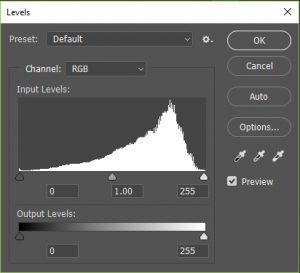 You can check the value range of your painting or, in this case, a painting by sir Lawrence Alma, by using the Levels adjustment tool (Ctrl+L) in Photoshop. This will show you a diagram that may look like the one on the left.
You can check the value range of your painting or, in this case, a painting by sir Lawrence Alma, by using the Levels adjustment tool (Ctrl+L) in Photoshop. This will show you a diagram that may look like the one on the left.
Photoshop indicates the values of the painting on a scale from 0 to 255 where zero is dark and 255 is light. The pixels that corresponds with the right value will be presented by a white line.
The diagram clearly shows that most of the pixels in this work are situated at the right end (light) of the value scale.
Following moods can be considered if you want to work in a high key value range:
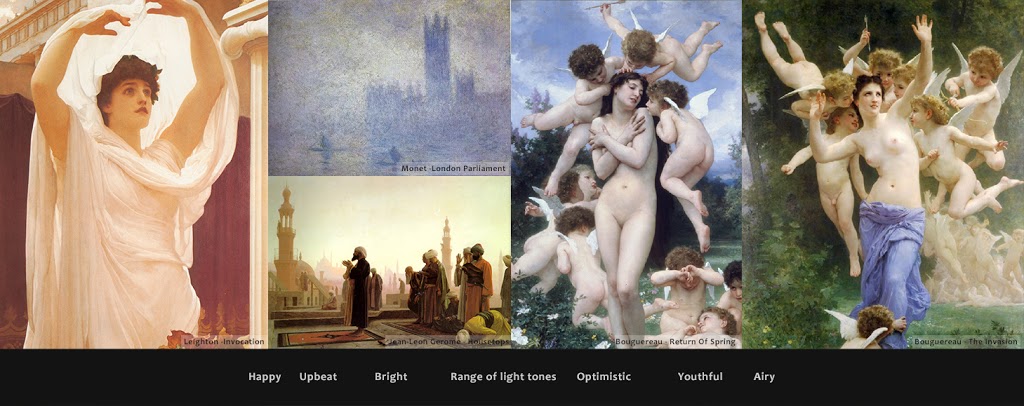
Mid key
When opening the painting in Photoshop and we check the value range, we notice that most of the values are situated in the middle range. Remember, there can always be certain values that are situated on one or both ends of the scale, acting as focus points or guiding the viewer around the painting. Most of the values are situated in the middle though. This is also visible when comparing the value gradients.
Low key
In conclusion
- Decide mood first
Before starting a painting, decide your mood first by choosing a value structure – Ask: ‘What mood do I want to convey?’-. You can remember yourself to stick to the chosen structure by putting your lightest and darkest value down as a reference.
- Every key works
Neither key is more correct or incorrect then the other. They all have their own purposes -setting the desired mood-, so the same picture can be painted in either key. Something Monet pulled of with his series of paintings of the Cathedral of Rouen:
As an exercise, Google a line-art drawing and shade it in the three different keys. I took a line-art of Winnie-the-Pooh:
Have fun!
-This topic can definitely explored more, so if you have resources on this, please share in the comment section below, thanks!
